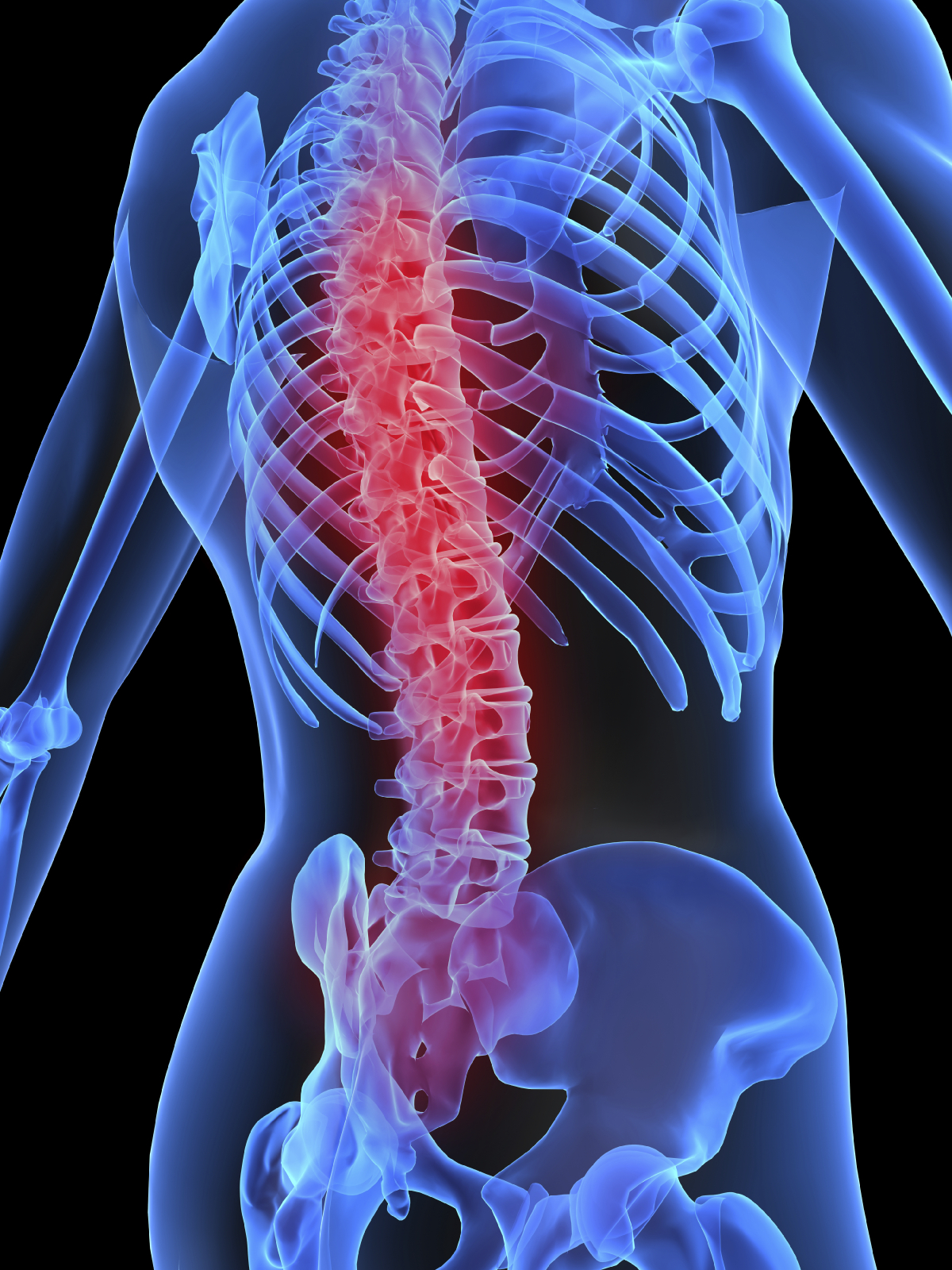
Lower back pain can be a common pain source for powerlifters and other strength athletes. Many seek the help of a medical doctor, a chiropractor or a physical therapist. In these cases an accurate diagnosis is usually given, depending on the skill level of the doctor. In cases where no professional help is sought out, the lifter is left to self-educate, rehab and often wonder what the problem really is.
Spondylolisthesis is a lower back injury involving a forward slipping of one vertebra over another. It's a very common diagnosis in athletes that participate in sports that have extreme axial strain on the low back. According to Terry Yochum, DC, DACBR, more than 50 percent of powerlifters, strongmen and football players have evidence of spondylolisthesis on x-ray. The risk of further forward slippage in patients after initial injury is very small. It's usually the fifth or bottom lumbar vertebrae that is involved, slipping forward over the top of the sacrum. (Note: this diagram depicts L4 slipping over L5).
Spondylolisthesis can be graded depending on how far forward the vertebra has slipped, which is measured by a lateral lumbar x-ray.
Normally the small pain-sensitive facet joints on the back of the vertebra prevent this slippage from occurring. When the spine is loaded heavily enough, a stress fracture can occur in the part of the vertebra that is weight bearing, called the pars interarticularis. If a fracture is observed on an x-ray, a MRI or bone scan can determine if the trauma is acute or active. If the injury is acute, a brace will usually be fitted to help position the pelvis posteriorly to prevent further stress of the injured area. This injury has to heal like any other fracture would.
If the stress fracture is old/healed, the focus should be on stability of the pelvis and lumbar spine. Extension exercises that place the pelvis in an excessive anterior tilt should be avoided. If you have this diagnosis and are concerned with continuing your sport, you can do so if the area is stable. Here’s a short list of the items that need to become priority:
- Emphasize stretching/mobilizing the hamstrings and hip flexors.
- Strengthen the lower abs and the glutes. There are many ways to do each.
- Static core stability work is great. I used to laugh at mobility work like McGill’s Big 4, but now I see their value in a rehab or preventative program.
- Visit a chiropractor that performs a technique called flexion distraction. This technique will distract/stretch the area of dysfunction and relieve the pain tremendously. They should also be able to functionally screen you to determine your particular weaknesses and imbalances before prescribing rehab.
- Reverse hypers are also excellent for a condition such as this. Don’t swing excessively. This exercise has come under some fire, being touted as lumbar flexion under a load, which is a major no-no. This movement is really flexion under decompression. There's no axial load, rather the weight is doing exactly the opposite.
Some specialists will tell you that the higher the grade spondylolisthesis, the worse the symptoms. This isn’t always true. A patient can barely have a grade 1 and have tremendous pain. Another patient can have a grade 3 and can be near asymptomatic.
A spondylolisthesis doesn't usually get worse, but if the amount of slipping increases with great trauma, then a surgeon may operate to fuse the segments together, preventing further forward slipping.










